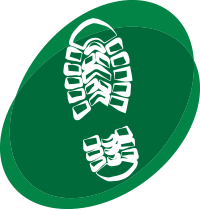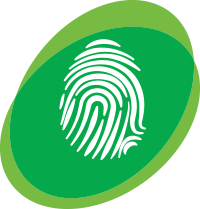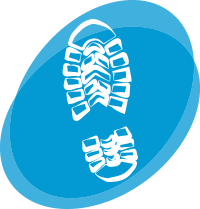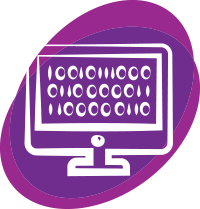Our goal is to share how CSAFE research directly impacts the forensic science community. To connect you with the latest advancements, our team publicizes research results in peer-reviewed scientific journals and at worldwide forensic science conferences.
Below you will find links to full publications resulting from center research, as well as copies of recent presentation slides. Looking for more CSAFE products? Find research tools and datasets in our resources section.
Materials By Research Area
Page 3 of 13
A Rotation-Based Feature and Bayesian Hierarchical Model for the Forensic Evaluation of Handwriting Evidence in a Closed Set
Type: Publication Research Area(s): Forensic Statistics,Handwriting
Published: 2023 | By: Amy Crawford
Forensic handwriting examiners are often tasked with identifying the writer of a particular document. Examples of handwriting evidence include ransom notes, forged documents and signatures, and threatening letters. At present, examiners rely on visual inspection of similarities and differences between…
Shining a Light on Forensic Black-box Studies
Type: Publication Research Area(s): Forensic Statistics,Implementation and Practice
Published: 2023 | By: Kori Khan
Forensic science plays a critical role in the United States criminal justice system. For decades, many feature-based fields of forensic science, such as firearm and toolmark identification, developed outside the scientific community’s purview. The results of these studies are widely…
Creating a Forensic Database of Shoeprints from Online Shoe-Tread Photos
Type: Publication Research Area(s): Footwear
Published: 2023 | By: Samia Shafique
Shoe-tread impressions are one of the most common types of evidence left at crime scenes. However, the utility of such evidence is limited by the lack of databases of footwear prints that cover the large and growing number of distinct…
Perceptions of blind proficiency testing among latent print examiners
Type: Publication Research Area(s): Implementation and Practice,Latent Print
Published: 2023 | By: Brett O. Gardner
In recent years, scholars have levied multiple criticisms against traditional proficiency testing procedures in forensic laboratories. Consequently, on several occasions, authorities have formally recommended that laboratories implement blind proficiency testing procedures. Implementation has been slow, but laboratory management has increasingly…
What types of information can and do latent print examiners review? A survey of practicing examiners
Type: Publication Research Area(s): Implementation and Practice,Latent Print
Published: 2023 | By: Brett Gardner
Understanding typical work practices is important to understanding the decision-making process underlying latent print comparison and improving the reliability of the discipline. Despite efforts to standardize work practices, a growing literature has demonstrated that contextual effects can influence every aspect…
Hierarchical Bayesian non-response models for error rates in forensic black-box studies
Type: Publication Research Area(s): Forensic Statistics,Implementation and Practice,Training and Education
Published: 2023 | By: Kori Khan
Forensic science plays a critical role in the United States criminal legal system. Historically, however, most feature-based fields of forensic science, including firearms examination and latent print analysis, have not been shown to be scientifically valid. Recently, black-box studies have…
A Comparison of Various Score-Based Likelihood Ratio (SLR) Methods for the Quantitative Assessment of Footwear Evidence
Type: Presentation Slides Research Area(s): Footwear,Forensic Statistics
Published: 2023 | By: Valerie Han
This presentation is from the 75th Anniversary Conference of the American Academy of Forensic Sciences, Orlando, Florida, February 13-18, 2023. Posted with permission of CSAFE.
Blind Testing and Blind Verification in Firearms
Type: Presentation Slides Research Area(s): Blind Testing,Firearms and Toolmarks
Published: 2023 | By: Maddisen Neuman
This workshop provides a summary of the Houston Forensic Science Center’s blind quality control program, focusing on blind quality control and blind verification in the Firearms section. The presenters will share their experiences- successes and failures- to best inform other…
Towards a likelihood ratio approach for bloodstain pattern analysis
Type: Publication Research Area(s): Bloodstain,Forensic Statistics
Published: 2022 | By: Tong Zou
In this work, we explore the application of likelihood ratio as a forensic evidence assessment tool to evaluate the causal mechanism of a bloodstain pattern. It is assumed that there are two competing hypotheses regarding the cause of a bloodstain…
Does image editing improve the quality of latent prints? An analysis of image-editing techniques in one crime laboratory
Type: Publication Research Area(s): Latent Print
Published: 2023 | By: Brett Gardner
Field research within latent print comparison has remained sparse in the context of an otherwise growing body of literature examining the discipline. Studies examining how ACE-V procedures are implemented within active crime laboratories are especially lacking in light of research…
An Open-Source Implementation of the CMPS Algorithm for Assessing Similarity of Bullets
Type: Publication Research Area(s): Firearms and Toolmarks,Forensic Statistics
Published: 2022 | By: Wangqian Ju
In this paper, we introduce the R package cmpsR, an open-source implementation of the Congruent Matching Profile Segments (CMPS) method developed at the National Institute of Standards and Technology (NIST) for objective comparison of striated tool marks. The functionality of…
Reply to Response to Vacuous standards – Subversion of the OSAC standards-development process
Type: Publication Research Area(s): Implementation and Practice
Published: 2021 | By: Geoffrey Stewart Morrison
This Letter to the Editor is a reply to Mohammed et al. (2021) https://doi.org/10.1016/j.fsisyn.2021.100145, which in turn is a response to Morrison et al. (2020) “Vacuous standards – subversion of the OSAC standards-development process” https://doi.org/10.1016/j.fsisyn.2020.06.005.
LibDroid: Summarizing information flow of Android Native Libraries via Static Analysis
Type: Publication Research Area(s): Digital
Published: 2022 | By: Chen Shi
With advancements in technology, people are taking advantage of mobile devices to access e-mails, search the web, and video chat. Therefore, extracting evidence from mobile phones is an important component of the investigation process. As Android app developers could leverage…
Comparing handwriter and FLASH ID®, Two Handwriting Analysis Programs
Type: Presentation Slides Research Area(s): Handwriting
Published: 2022 | By: Stephanie Reinders
FLASH ID and handwriter are computer programs that compare questioned handwritten documents against handwritten samples from known writers. FLASH ID was developed by Sciometrics and is used by the FBI, Handwriter is an open-source R package designed by CSAFE. We…
Evaluating Reference Sets for Score-Based Likelihood Ratios for Camera Device Identification
Type: Presentation Slides Research Area(s): Digital
Published: 2022 | By: Stephanie Reinders
An investigator wants to know if an illicit image captured by an unknown camera was taken by a person of interest’s (POI’s) phone. Score-based likelihood ratios (SLRs) have been used to answer this question in previous research. We explore whether…
Error Rate Methods for Forensic Handwriting Identification
Type: Presentation Slides Research Area(s): Forensic Statistics,Handwriting
Published: 2022 | By: Danica Ommen
Presentation is from the 106th International Association for Identification (IAI) Annual Educational Conference
Modeling Covarying Responses in Complex Tasks
Type: Publication Research Area(s): Latent Print
Published: 2022 | By: Amanda Luby
In testing situations, participants are often asked for supplementary re- sponses in addition to the primary response of interest, which may in- clude quantities like confidence or reported difficulty. These additional responses can be incorporated into a psychometric model either…
Analyzing spatial responses: A comparison of IRT- based approaches, Conference Presentation
Type: Presentation Slides Research Area(s): Latent Print
Published: 2022 | By: Amanda Luby
We investigate two approaches for analyzing spatial coordinate responses using models inspired by Item Response Theory (IRT). In the first, we use a two-stage approach to first construct a pseudoresponse matrix using the spatial information and then apply standard IRT…
Characterizing Variability in Forensic Decision-Making with Item Response Theory
Type: Presentation Slides Research Area(s): Latent Print
Published: 2022 | By: Amanda Luby
This presentation is from the 2022 Joint Statistical Meetings
Measuring Proficiency among Latent Print Examiners: A Statistical Approach from Standardized Testing
Type: Presentation Slides Research Area(s): Forensic Statistics,Latent Print
Published: 2022 | By: Amanda Luby
This presentation is from the 74th Annual Scientific Conference of the American Academy of Forensic Sciences
Page 3 of 13









